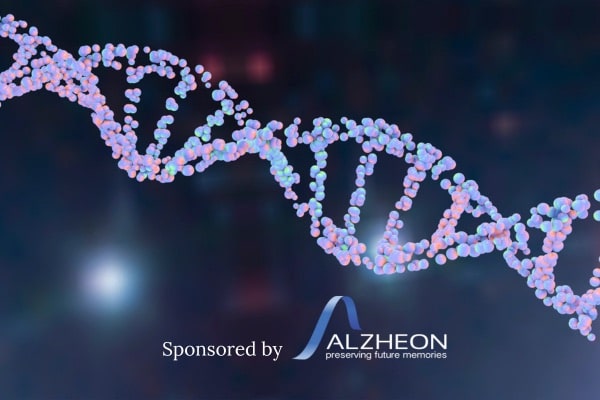For people with Down syndrome, early-onset Alzheimer’s disease is almost a certainty. UC Irvine professor Elizabeth Head explains how studying Alzheimer’s in individuals with Down syndrome could help us develop new treatments.
People with Down syndrome have a 9/10 chance of developing early-onset Alzheimer’s — a reality tied to genetics. This genetic condition also makes this group of people a key part of the story when it comes to understanding Alzheimer’s disease — and unlocking new treatments. While researchers have long studied other inherited forms of the disease, people with Down syndrome have largely been left out of clinical trials. That’s beginning to change. Scientists now say this population could offer unique insights into how Alzheimer’s progresses — and how to prevent or slow it.
“There is a 90- percent lifetime risk of developing Alzheimer’s disease in people with Down Syndrome,” Elizabeth Head, a professor at the University of California, Irvine, told Being Patient. Her work pushes to include people with Down syndrome in Alzheimer’s research, and as of now, a major source of her funding for research into Down Syndrome and Alzheimer’s comes from the National Institutes of Health.
The Down syndrome Alzheimer’s link
Why does Down syndrome often lead to Alzheimer’s? While most people have two copies of each chromosome, one inherited from each parent, in Down syndrome, people are born with an extra copy of chromosome 21. This chromosome is home to the APP gene. The extra dose of APP leads to the formation of beta-amyloid proteins and plaques, causing early-onset Alzheimer’s disease.
The result? Down syndrome is the most common genetic cause of Alzheimer’s, affecting more than 250,000 Americans.
Typically, the biological hallmarks of Alzheimer’s disease develop over decades. First, beta-amyloid protein plaques form in the brain, followed by tau protein tangles forming inside brain cells. Typically, Alzheimer’s symptoms start after the age of 65 because these protein hallmarks build up slowly. But not everyone with these protein hallmarks develops cognitive decline and scientists aren’t sure why.
In Down syndrome, the process is more aggressive, and the pathological changes are more likely to result in cognitive symptoms.
“Typically, by the age of 40 years, everybody with Down syndrome has full-blown Alzheimer’s disease changes in their brains, but they may not show cognitive changes until about a decade later.”
Helping people with Down syndrome live longer and healthier
People with Down syndrome develop many medical problems that affect their heart, vision, immune system, and thyroid gland. By treating these conditions, doctors have extended the lifespan of individuals with Down syndrome. These individuals were expected to live nine to 11 years in the 1900s, but by the 1950s their lifespan was extended to 26, and now this has further increased into the 50s and 60s.
Preventing and treating Alzheimer’s and dementia could help people with Down syndrome live even longer and help us understand and treat Alzheimer’s disease in the general population.
People with Down syndrome show the same Alzheimer’s disease changes as everyone else who develops the disease, except they start decades earlier and occur more rapidly. The cognitive changes are also more predictable.
“By virtue of their age-dependent Alzheimer’s disease changes that we are really good at measuring, they give us an incredible opportunity for prevention and treatment studies, and they give us some really important clues on how we can buffer our brains from Alzheimer’s disease,” said Head.
Head and her colleagues recently published a case study in the journal Alzheimer’s & Dementia documenting a woman with Down Syndrome who remained cognitively healthy until she died of other causes in her 60s. The team had followed the woman for several years and opted to donate her brain to research after her death.
“Every 16 months, she came to visit us, and we were able to assess her learning and memory ability,” said Head. Her cognition remained stable over the years, which Head said was remarkable.
While the woman’s brain had amyloid plaques and tau tangles, the levels of these proteins were lower than expected for her age.
Did genes protect her brain and help clear out plaques? The ApoE gene is the most significant genetic risk factor for Alzheimer’s disease and has three different variants. The ApoE3 variant has a neutral effect, the ApoE4 version increases the chances of developing Alzheimer’s substantially, while ApoE2 provides protection and helps the brain’s immune system clear out plaques. The woman in this case study only had one copy of the ApoE2 gene.
Other lifestyle factors could have made her brain even more resilient.
“She had this incredibly enriched educational background for someone with Down syndrome,” said Head. The woman was also working throughout her life, which provided more social engagement and enrichment — all factors that may have helped her brain weather the plaques and tangles.
According to Head, this case raises broader questions about the benefits of education for people with intellectual disabilities. Putting more resources into services for people with these disabilities could help them stay healthy longer.
Alzheimer’s trials for people with Down syndrome
Before drugmakers would agree to run trials with participants who have Down syndrome, researchers had to prove they had ways to measure cognitive changes in thinking and memory, even in people with intellectual disabilities. Head and others in the field worked diligently to develop these tests.
Now, there is no excuse: Researchers now have well-validated ways to track cognitive decline in people with Down syndrome, enabling inclusive clinical trials.
The most prominent is the upcoming ALADDIN study — testing Eli Lilly’s anti-amyloid drug Kisunla in people with Down syndrome.
There are concerns that individuals with Down syndrome may be more prone to certain side effects since they have higher levels of plaques on their blood vessels. “Beta-amyloid targeting immunotherapies […] might bind to beta amyloid that is also on blood vessel walls,” said Head. “That potentially could lead to some bleeding in the brain.”
To manage that risk, new trials for Down syndrome up the doses of the drugs slower and include more monitoring to catch any potentially harmful side effects early.
Another early-stage trial being run by AC Immune SA is testing a beta-amyloid vaccine for treating Alzheimer’s in people with Down syndrome, with results expected midway through next year. Another Phase 1 trial run by IONIS Pharmaceuticals is testing a gene-silencing therapy for Alzheimer’s disease.
With funding cuts across the NIH and research grants involving diversity, equity, inclusion, and accessibility being suspended, a lot of Alzheimer’s research has been put on hold. There is concern that Down syndrome research could be affected down the line.
Most of Head’s funding comes through the INCLUDE project at the NIH to research diseases that affect people with Down syndrome and fund clinical trials. “Each day, [I see] another crack in the foundation of research for Alzheimer’s disease,” said Head. “We are trying to stay as optimistic as possible for our families and for our participants, our volunteers, you know, but also for all our trainees.”




